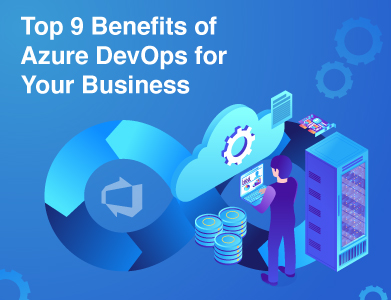Insurtech Reshaping the Insurance Industry Landscape
 Admin
Admin Insurtech
Insurtech Nov 11, 2024
Nov 11, 2024

Table of Content
Insurtech, or insurance technology, refers to the use of modern technology to make insurance processes more efficient, aiming to improve growth, distribution, and customer experiences. By adopting new technologies, traditional insurance companies can settle claims faster and offer more efficient solutions.
Digital transformation driven by cloud computing, mobile apps, and AI—is playing a major role in reshaping the insurance industry. In 2022, the global Insurtech market was valued at around $5.5 billion, with predictions that it will grow to $146.4 billion by 2030 at an annual growth rate of 50.8%.
In this article, we’ll talk about technologies that are reshaping the insurance industry—and why adopting them can help your business
Why Insurance Companies Can’t Afford to Ignore Technology Anymore ?
Customers now expect faster claims processing, personalized policies, and seamless digital experiences. Meanwhile, traditional processes are slowing down growth and costing insurers valuable time and money.
This is where Insurtech comes in. Technology isn’t just good to have feature today, it’s the core engine that can drive your business forward. With AI, enterprise automation, and predictive analytics, insurers are transforming everything from underwriting and risk assessment to customer service and claims processing.
Without adopting these technologies, insurers risk being left behind by competitors who can deliver faster, smarter, and more personalized services. The gap between those who innovate and those who don’t is widening, and in a market where efficiency and customer experience are key, the stakes have never been higher.
Innovations in Insurtech
1. Predictive Analytics & AI: Smarter Decisions for Insurers
Predictive analytics and AI help insurers make better decisions. By analyzing data, insurers can reduce claims and underwriting costs. Nearly 60% of insurers say these insights have improved their sales, allowing them to offer more accurate policy prices and personalized options for customers.
Explore Further: Big Data In Insurance
2. Machine Learning for Faster Claims Processing
Machine learning speeds up the claims process. It predicts costs and rates, helping insurers process claims more quickly and smoothly. Customers benefit from faster service, and insurers save time and resources.
3. Digital Documentation with OCR: Less Paperwork
Optical Character Recognition (OCR) technology lets insurers scan and digitize documents,toring them in the cloud. This eliminates piles of paperwork, speeds up processing, and ensures data is accurate, giving customers faster, more reliable service.
4. Automated Online Services: Easy Insurance Buying
Automation allows customers to explore and purchase insurance online anytime. This makes the process simple and convenient. Customers enjoy a self-service experience, while insurers meet the growing demand for easy, online options.
5. Field Management Systems: Better Team Coordination
Field management tools help insurers organize tasks for their field teams. These tools make sure tasks are assigned based on availability and skills, boosting productivity and improving customer service.
6. AI-Powered Auto Insurance: Personalized Rates
AI allows insurers to adjust auto insurance premiums based on a driver’s habits. This helps create fair, personalized rates, building trust and loyalty among customers looking for insurance that fits their driving behavior.
7. Drones for Quick Property Inspections
Drones help insurers inspect properties and assess damages quickly and accurately. This technology speeds up claims, providing faster service for customers, especially after natural disasters or accidents.
8. Embedded Insurance: Coverage at the Point of Sale
Embedded insurance offers coverage when customers buy products or services, making it easy to add insurance on the spot. This approach helps fill the gap between what customers need and what they buy, making insurance more accessible.
Use Cases of Insurtech For Ultimate Business Growth
1. Streamlined Customer Onboarding
Automating the process of onboarding new customers can drastically reduce the time needed to start their insurance coverage. By using tools that verify identity digitally (like AI-driven ID checks) and electronic forms, insurers can eliminate long paperwork processes. Customers benefit from faster approval times and more convenient, digital-first service.
How to Implement
Set up a digital onboarding platform that connects to official databases for identity verification and integrate AI to review and approve documents instantly. This allows customers to apply and receive their policy approval within minutes, instead of waiting days or weeks.
2. Customized Insurance with AI
Insurers can offer personalized insurance policies by analyzing customer data such as spending habits, health information, or driving behavior. This allows customers to receive plans that are tailored specifically to their needs, instead of generic plans that might not fit their lifestyle or financial situation.
How to Implement
By optimizing AI software that gathers and processes customer data to offer real-time recommendations. For example, car insurance premiums can be adjusted based on a person’s driving habits, so safe drivers can pay lower rates. This gives customers more control over their insurance costs.
3. Faster Claims Processing with Automation
AI and automated systems can make claims processing faster and more accurate. Customers want their claims to be approved and paid as quickly as possible, and by using technology, insurers can automatically verify claim details, reducing manual work and speeding up the process.
How to Implement
Deploy AI-powered systems that automatically scan claim submissions for accuracy and flag potential fraud. Customers can submit claims digitally through an app, track their status, and receive payments in hours or days, instead of waiting weeks.
4. Mobile Insurance Services
Many customers prefer managing their insurance through their smartphones. Offering a mobile application where they can view their policy, submit claims, or even chat with support makes the entire process easier and more flexible.
How to Implement
Develop a mobile app that integrates all your customer services in one place. Through the app, customers can manage their policy, make payments, and get reminders when something needs attention. This improves customer satisfaction by giving them an easy way to interact with their insurance provider.
5. Fraud Detection for Trust
Insurance fraud is a big problem and can result in higher costs for everyone. Insurers can use AI to detect suspicious claims and prevent fraud in real time. This ensures that honest customers don’t have to deal with higher premiums caused by fraudulent activities.
How to Implement
Integrate an AI system into your claims process to detect fraud patterns. For example, the system can flag claims that look unusual or out of the ordinary, helping your team to investigate them quickly. This leads to fewer fraudulent payouts and keeps prices fair for all customers.
6. AI-Driven Chatbots for Customer Support
Customers often need help understanding their policies or submitting claims, and AI chatbots can provide instant answers. Whether it's checking policy details or submitting a claim, customers can interact with chatbots 24/7 without waiting for a human representative.
How to Implement
Set up AI chatbots on your website and mobile app that connect to your customer support systems. These chatbots can handle common customer requests, such as policy questions or guiding them through filing a claim. This reduces wait times and improves overall customer experience.
7. Usage-Based Insurance (UBI) for Personalized Pricing
By using telematics (devices that track driving behavior), insurers can offer policies based on how customers actually drive. Safe drivers, for example, can receive lower premiums, which gives them more control over their costs and encourages safer driving habits.
How to Implement
Introduce telematics systems in cars that track data like speed, braking, and distance driven. Use this data to create custom insurance policies that reward safer drivers with lower premiums. Customers appreciate the transparency and the ability to reduce their insurance costs by driving safely.
8. Unified Customer Data for Personalized Service
Collecting all customer data (from different channels like apps, calls, and in-person interactions) into one system can give insurers a full picture of each customer. This allows for personalized recommendations and better service, as insurers can offer solutions that fit individual customer needs.
How to Implement
Integrate your systems so customer data from all interactions is stored in a single platform. This way, you can see a customer’s full history and offer personalized products, such as suggesting life insurance to someone starting a family. This data-driven approach builds trust and customer loyalty.
9. Blockchain for Transparent Claims and Payments
Blockchain technology ensures transparency in all transactions and interactions. Using it to manage claims and policy renewals ensures customers can trust that their data is secure and that their claims are processed fairly without any hidden processes.
How to Implement
Use blockchain to create tamper-proof records of all customer claims and policies. When a claim is made, the blockchain verifies and logs it, ensuring the process is transparent. This builds trust as customers can see that their claims are handled fairly and securely.
10. Automated Policy Renewals with Alerts
Customers often miss renewal dates due to oversight, leading to coverage lapses. Automating the renewal process with timely reminders and allowing customers to renew digitally ensures continuous coverage and avoids disruption.
How to Implement
Set up an automated system to send out reminders for policy renewals via SMS, email, or in-app notifications. Include a one-click renewal option to make the process quick and easy. This keeps customers informed and ensures they never miss a renewal date, which improves customer satisfaction.
Pros and Cons of Implementing InsurTech For Buyers
For Consumers
Pros
InsurTech makes it easier for customers to access policy information and interact with insurers. It enables personalized policy options and improves the overall customer experience by simplifying digital interactions. This leads to greater satisfaction and convenience for policyholders.
Cons
InsurTech is still evolving, and compared to traditional insurance methods, its coverage and market presence are less widespread. Some customers may face challenges with limited geographical availability and lower market penetration.
For Agents
Pros
Integrating technology with traditional insurance processes can increase efficiency, allowing agents to focus on more critical tasks. This can lead to cost savings and better use of time, enhancing the overall value agents provide to clients.
Cons
Adopting digital insurance solutions requires agents to be trained in these new technologies. Currently, many InsurTech tools are designed for direct-to-consumer interactions, limiting the options available for agents to fully capitalize on these innovations.
For Reinsurers
Pros
Reinsurers can benefit from partnering with InsurTech companies, especially by using cloud-based platforms and advanced tools like drone-based surveillance. These technologies can improve risk assessment and operational efficiency.
Cons
Collaborating with InsurTech may require significant time and effort due to differences in operating models. Additionally, privacy concerns arise as many InsurTech companies rely on blockchain and other technologies that may expose sensitive data across multiple platforms.
Check Out Our Portfolio: Union Insurance Digital Transformation
Wrapping Up
The integration of InsurTech into traditional insurance models is influenced by customer preferences, some may favor in-person interactions, while others seek the convenience of digital solutions. For traditional insurers, partnering with InsurTech companies can improve efficiency, enhance customer engagement, and grow operations with minimal investment. However, before making this shift, insurers must first merge both company and customer data on a single platform for a seamless transition through cloud.
Get in touch
Latest Posts










